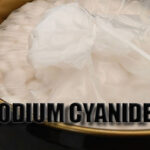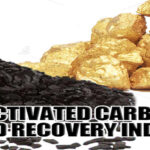
Lithium ore beneficiation presents unique challenges and opportunities. Understanding the intricacies of this process is crucial for global miners aiming to enhance productivity and maximize yields.
Lithium Minerals and Their Distinct Beneficiation Requirements
Lithium minerals, including spodumene, lepidolite, lithium feldspar, and iron lepidolite, exhibit diverse ore properties. Consequently, their beneficiation schemes vary significantly. The first step upon obtaining the ore is to conduct X-ray diffraction mineral analysis to accurately identify the lithium mineral type, which then guides the selection of the appropriate beneficiation plan:
- Spodumene: Utilize a fatty acid collector under alkaline conditions.
- Lepidolite: Employ amine and fatty acid collectors under acidic, neutral, and alkaline conditions.
- Lithium feldspar: Apply an amine collector in acidic environments.
- Iron lithium mica: Opt for strong magnetic separation or an amine collector.
Overcoming Weathering-Related Challenges
Weathering poses a major issue in lithium ore beneficiation. It often leads to contamination of lithium minerals by metal ions like iron and aluminum, which impairs the selectivity of the beneficiation process. As a result, desliming is an indispensable step for all types of lithium minerals. Desliming serves a dual purpose: it activates the minerals and reduces the consumption of beneficiation reagents. Typically, the desliming ratio should be controlled at around 10%. A ratio too high will cause excessive lithium loss, while a ratio too low will compromise the desliming effect. This makes the selection of appropriate grinding fineness and desliming equipment (such as mud buckets and thickeners) critical to the success of the beneficiation process.
Collector Selection and pH Optimization
Fatty acids, amines, and neutral oils are among the most commonly used collectors in lithium ore beneficiation. Fatty acids function as anion collectors, while amines act as cation collectors. The surface potential difference between lithium minerals and gangue minerals determines the optimal pH value for separation, particularly when using amine collectors, which are highly sensitive to pH changes. Miners can assess the suitability of a pH range by evaluating the separation effect. Three key factors determine the success of lithium ore beneficiation:
- Efficient Desliming: Effective removal of slime is essential for a clean separation.
- Precise pH Control: Maintaining the appropriate pH level for optimal mineral – collector interaction.
- Optimal Collector Selection: Choosing the right collector based on the specific lithium mineral type and ore characteristics.




